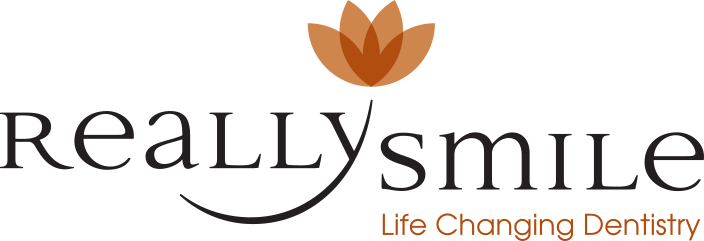At Really Smile (in Carmel, IN), we take the saying, “A picture is worth a thousand words,” very seriously. Digital imaging allows us to provide you with unprecedented clarity and understanding about the procedures we recommend, as well as give you an up-close look at the state of your teeth. Ever wondered what your dentist sees when he looks into your mouth? Well, now you can get a look too!
Most people can really only see the teeth that are visible when they smile, and that can give a false impression of the health of your teeth. You might think you’re taking care of your oral health, but until you see it with your own eyes (like the dentist does) you won’t really know! Digital imaging provides the opportunity to do that. It also greatly enhances our ability to diagnose oral health problems and create treatment plans with greater accuracy than ever before.
What Digital Imaging Technologies Does Really Smile Have?
It used to be that there was really only one way to get an image of your teeth: an X-ray machine: you know, that big cannon looking thing that we’d point at your teeth while you wore a lead blanket?
Today, we have a lot more options. Across the board, our current fleet of digital imaging equipment is:
More Comfortable For You, The Patient
More Accurate
More Useful (without advanced digital imaging technology, some of the procedures we offer almost wouldn’t be possible!)
Let’s examine the technologies that we use to enhance your dental experience, and which allow us to offer the very best in treatments.
Cone Beam CT Scan (CBCT)
The Cone Beam CT Scan (CBCT) is an evolution of the CT Scan, which you might know better as a CAT scan. CT stands for computed tomography. Tomography comes from the Greek word tomos, which means “section” and grapho, “to write”, or “to write in sections”. A CT scan will take many cross-sectional images of your teeth, and then those images are combined into a single image for viewing.
Cone Beam CT does the same thing, but with the added benefit that the images are in 3-D (three dimensions). The “cone” in CBCT refers to the X-ray beam itself. Instead of taking a single two-dimensional X-ray image, the CBCT rotates around your head and takes hundreds of sectional images.This allows us to view your teeth, make diagnoses, and create treatment plans (for a wide range of procedures) with greater speed and accuracy than ever before.
I/O Camera
“I/O” stands for intraoral. This imaging technology is about as close to a spy camera as you’ll ever get in a dentist’s office! It not only allows the dentist to get a much clearer view of your mouth, but it also allows you the patient to get a look too!
The genius of the I/O camera concept is in its simplicity. It’s a small camera on the end of a wand. This is much more useful than a dental mirror to get a look at your teeth, and it has the added benefit of being recordable as well if necessary. Patients really appreciate the I/O camera, because now they can understand why the dentist is making certain recommendations, and it allows them to get a real handle on the state of their oral health!
Laser Cavity Detection System
Where the I/O camera might replace a dental mirror, the Laser Cavity Detection System might replace the sharp metal objects we use to find cavities.
Before Laser Cavity Detection, the only way to find a cavity was to poke around your teeth with a sharp metal tool to see if it gets caught on a cavity. There are two problems with this: one, it’s not terribly accurate, and two, it only allows you to find cavities that are large enough for the tool to fit in! Cavities grow over time, and if it’s big enough for one of our tools to get caught in it, it’s already pretty advanced.
Laser Cavity Detection uses a laser beam to measure the density of your enamel. This allows us to identify decay that’s smaller than a needle point (which is much smaller than the metal tool). This is especially beneficial because if we catch a cavity early enough, all that’s required to treat it is the remineralization of the enamel: no filling required!
i-Tero Digital Impressions
i-Tero Digital Impressions are an indispensable part of our technological arsenal. Your teeth are scanned with a handheld device, which produced a 3-D digital image. This is used to make a digital impression, which your dentist will use to create treatment plans.
Once the digital impression is made and the treatment plan is complete (usually only after a few minutes), the file is sent directly to wherever it needs to go to create a restoration (crown and bridges), implant, or Invislign aligners.
Before digital impressions, there were just impressions. Your dentist would fill a tray with a gooey substance that you would hold in your mouth; the goo would solidify, leaving an imprint of your teeth. Though still in common use, physical impressions are uncomfortable for the patient, not entirely accurate, and they can’t be stored if you need a replacement for one dental appliance or another (they’re large and fragile: we’d need a lot more closet space if we wanted to keep the physical impressions of all our patients!).
Choose Really Smile for your next procedure!
Imaging makes our job easier, of course, and we have a lot of imaging technology that can help us consistently provide you with the best possible care. However, it’s not for our convenience that we’ve made these investments in our equipment. Digital imaging is a powerful tool that allows us to communicate better with our patients.
Don’t just get dentistry; get dentistry on the cutting edge!
Call our office at 317-597-8748 to make an appointment now, online!
